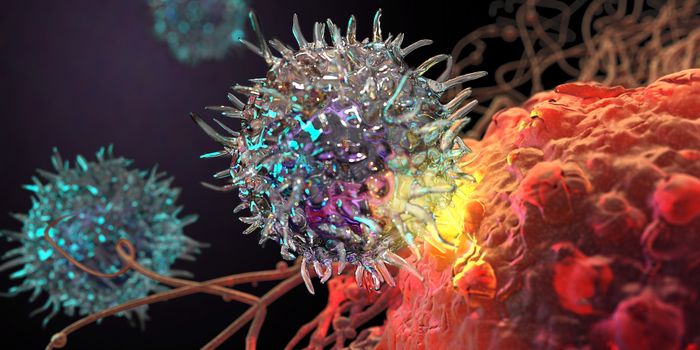Using astronomy to image cancer tumors
In an interdisciplinary breakthrough, a recent study published in Science describes the development of a new platform, dubbed AstroPath, that combines astronomic image analysis and mapping with pathology specimens in order to examine tumors. The platform, which will help predict which cancer patients will respond to immunotherapies, was designed by researchers at The Mark Foundation Center for Advanced Genomics and Imaging at Johns Hopkins University and the Bloomberg~Kimmel Institute for Cancer Immunotherapy.
"This platform has the potential to transform how oncologists will deliver cancer immunotherapy," comments Drew Pardoll, M.D., Ph.D., who is the director of the Bloomberg~Kimmel Institute for Cancer Immunotherapy. "For the last 40 years, pathology analysis of cancer has examined one marker at a time, which provides limited information. Leveraging new technology, including instrumentation to image up to 12 markers simultaneously, the AstroPath imaging algorithms provide 1,000 times the information content from a single biopsy than is currently available through routine pathology. This facilitates precision cancer immunotherapy -- identifying the unique features of each patient's cancer to predict who will respond to a given immunotherapy, such as anti-PD-1, and who will not. In doing so, it also advances diagnostic pathology from uniparameter to multiparameter assays."
Anti-PD-1 is a type of immunotherapy used for melanoma patients that blocks the PD-1 protein that helps cancers hide from the immune system. In other words, anti-PD-1 therapy can make cancer cells more visible to immune T cells. However, not all cancer patients respond to this type of immunotherapy, and predicting who will respond is a challenge. Having a clearer sense of who will respond will help physicians choose the best treatments for every individual; it will also help save precious time and money.
AstroPath employs immunofluorescent imaging to look for and tag biomarkers that are predictive of anti-PD-1 response. The platform is founded on image analysis techniques from the Sloan Digital Sky Survey, which is a large digital map of the universe. The imaging techniques are able to map tumor and immune cells on a microscopic scale in the same way that is possible for mapping the cosmos on an astronomical level.
"In astronomy, we often ask, 'What is the probability that galaxies are near each other?'" says Alexander Szalay, Ph.D., who is the director of the Institute for Data Intensive Engineering and Science (IDIES) at Johns Hopkins University. "We apply the same approach to cancer -- looking at spatial relations in the tumor microenvironment. It's the same problem on a vastly different scale."
Think of it as an atlas for tumor immunity. "Big data is changing science. There are applications everywhere, from astronomy to genomics to oceanography," Szalay adds. "Data-intensive scientific discovery is a new paradigm. The technical challenge we face is how to get consistent, reproducible results when you collect data at scale? AstroPath is a step towards establishing a universal standard. "
Sources: Science, Science Daily








